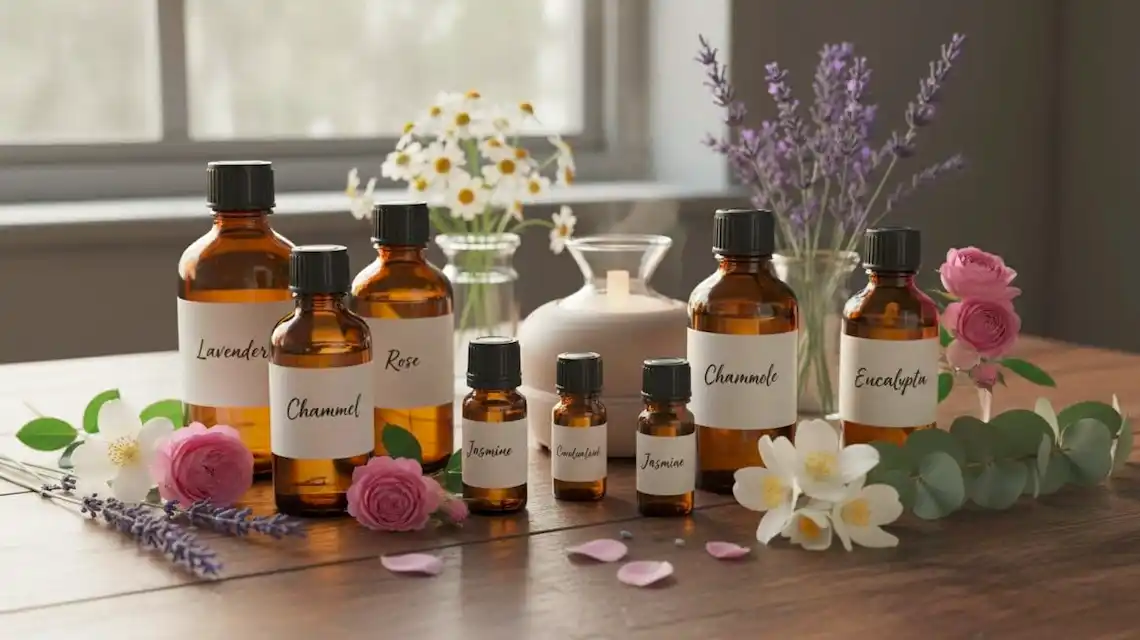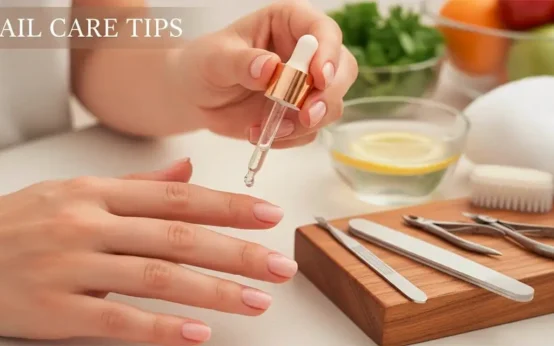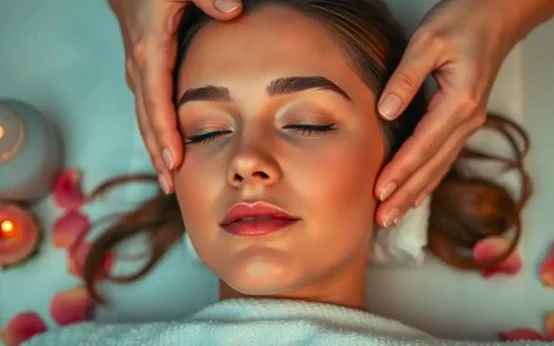You can feel it. The phone buzzes, the inbox stacks up, and your shoulders inch toward your ears. If that sounds familiar, you are not alone. This guide shows you how to use essential oils for stress relief with simple, safe steps you can try today. Essential oils are concentrated plant extracts that carry the scent and character of the plant. We will keep things practical and calm.
You will learn which oils work best, easy ways to use them, how to avoid common mistakes, and a quick routine you can repeat. Think of oils as support, not a cure. Pair them with sleep, breathing, and movement for steady progress. You will get clarity, not clutter, and leave with a plan that feels doable.
How Essential Oils Help You Relax
What essential oils are and how scent affects your brain
Essential oils come from plants through steam distillation or cold pressing. A lot of plant material goes into a tiny bottle, so the liquid is highly concentrated. That is why a little goes a long way.
When you smell an oil, tiny scent molecules travel through your nose and reach receptors linked to the limbic system. That part of the brain helps process emotions and memory. This is why a whiff of lavender can feel comforting, and orange can feel bright and sunny. The pathway is fast and direct, which makes inhalation a helpful first step when stress spikes.
What research says about stress relief
Small studies suggest certain oils may ease stress for some people. Lavender, bergamot, and chamomile show the most promise. Reported effects include lower feelings of worry, reduced heart rate, or a calmer mood during short tasks.
This is encouraging, but essential oils are not a medical treatment. Responses vary from person to person. The best approach is to test one oil at a time and notice how you feel after 5 to 10 minutes of inhalation. Keep notes so you can spot patterns that matter to you.
Set smart expectations and build calming habits
Oils do their best work when your basics are strong. Aim for quality sleep, slow breathing, light exercise, and steady meals. Ease up on caffeine when stress hits hard, since it can churn out jitters and racing thoughts.
Start small. Choose one method and one oil. Try it the same way for a week, then adjust. Track your mood before and after each use. If anxiety is severe or ongoing, seek support from a licensed professional. Oils can sit next to your plan, not replace it.
Best Essential Oils for Stress Relief and When to Use Each
Lavender: calm your body and sleep better
Lavender smells soft and floral, like a fresh sheet on the line. It shines for evening wind down, restless feelings, and sleep prep. Quick tip: inhale from the bottle for 3 slow breaths, or roll a diluted blend over wrists and collarbone 30 minutes before bed.
Bergamot: lift your mood during busy days
Bergamot is bright citrus with a light floral note, crisp and cheerful. Use it for daytime stress, tight schedules, or Sunday scaries. Quick tip: diffuse while you write a to-do list, or take a 2-minute breathing break with bergamot nearby.
Sweet Orange: quick comfort and a sunny boost
Sweet orange smells juicy and clean, like peeling a ripe fruit. Reach for it during a low mood or afternoon slump. Quick tip: place a drop on a tissue and breathe in gently. A personal inhaler works well for work or school.
Roman Chamomile: gentle calm for sensitive people
Roman chamomile has a soft, apple-like scent that feels tender and cozy. It suits sensitive skin, teens, or anyone who prefers a mild comfort. Quick tip: use a bedtime pillow spray or a diluted chest application to encourage slow, deep breathing.
Frankincense: grounding for a busy mind
Frankincense smells warm, resinous, and woodsy. It helps with meditation, prayer, or quiet focus. Quick tip: inhale during a 4-6 breathing pattern, so your exhale is a touch longer than your inhale. Let your thoughts slow with your breath.
Everyday Ways to Use Essential Oils for Stress Relief
If you want to know how to use essential oils for stress relief naturally, start with simple methods and light amounts. Small, regular sessions beat long, heavy ones. Try one method at a time so you can tell what helps.
Diffuse safely for a calm home or study space
Use 3 to 6 drops per 200 ml water in a diffuser. Run it for 15 to 30 minutes, then take a 30 to 60 minute break. Place the diffuser on a stable surface, not right next to your face. Keep a window cracked or a door open so air circulates. Avoid nonstop diffusing.
Use topically with the right dilution
Stick to simple ratios. Use 1 percent for face or sensitive areas, 2 percent for daily body use, and up to 3 percent for short-term relief. A 1 percent blend is 6 drops per ounce, or 30 ml, of carrier oil such as jojoba or sweet almond.
Try this roller recipe at 2 percent for a 10 ml bottle: add 6 drops total essential oil, then fill with carrier oil. Cap, roll gently to mix, and apply to pulse points or the back of your neck.
Quick inhalation when stress spikes
Fast options can reset your day. Use a personal inhaler, a drop on a tissue, or sniff a pre-diluted roller near your wrist. Practice box breathing: inhale 4, hold 4, exhale 4, hold 4. Repeat for four rounds. Keep oils away from your eyes, and do not inhale straight from skin if the oil is undiluted.
Bath, shower, and bedtime wind-down
For a bath, mix 3 to 6 drops with a tablespoon of unscented liquid soap or carrier oil before adding to the water. This helps disperse the oil. For a shower, add 2 to 3 drops to a washcloth on the floor where warm water can release steam. At night, use lavender or chamomile, dim the lights, read a page or two, and breathe slowly for five minutes.
Make a simple on-the-go stress kit
Pack a small pouch with a 10 ml 2 percent roller, a personal inhaler, and a travel-size carrier oil. Use your kit before a test, during a commute, or while you walk between meetings. Keep it away from heat and sun, since heat can damage the oils.
Safety, Quality, and Smart Buying Tips
Know your safe dilution and who needs less
Follow a quick guide. Adults can use 1 to 2 percent for daily blends, up to 3 percent for short-term relief. Older adults often do well at 1 percent. During pregnancy, stay around 1 percent. Kids over 2 years, keep blends between 0.5 and 1 percent.
Avoid strong photosensitizing oils on skin before sun, especially regular bergamot. Look for bergamot FCF, made to reduce sun risk, if you want a safer daytime option.
Patch test to protect your skin
Always test a new blend before wider use. Dilute the oil in a carrier, then apply a small amount to the inner forearm. Wait 24 hours. If you see redness or feel itch, wash with mild soap and water and stop using that blend.
Pets, kids, and pregnancy precautions
Use extra care around babies and during pregnancy. Do not diffuse in a closed room with pets. Let them come and go freely. Store bottles locked away from kids and pets. Do not apply essential oils directly to pets unless a trained veterinarian gives guidance.
Possible drug interactions and when to ask a doctor
Some oils may add to drowsiness if you use sedatives. People with asthma may be sensitive to strong scents. Check with a healthcare professional if you use SSRIs, benzodiazepines, or have a chronic illness. Do not ingest essential oils.
Spot good oils and store them right
Good bottles list the Latin name, plant part, country of origin, and a batch number. Reputable brands share testing like GC/MS on the label or website. Choose dark glass, not plastic. Store oils in a cool, dark place with the cap tight. Use citrus oils within 1 to 2 years. Resins such as frankincense can last 3 to 5 years.
Conclusion
Start simple. Pick one or two oils you enjoy, choose one method, keep amounts low, and notice how you feel after each use. Try a 7-day mini plan: diffuse while you plan your day, take a brief inhalation break when stress pops up, and settle into a lavender or chamomile bedtime routine. You now know how to use essential oils for stress relief in a way that is steady and safe.
Your next step is small. Set out one bottle and a carrier, then decide when you will use them today. Build a routine that feels kind, not strict. Thanks for reading, and feel free to share what works for you.
Related post:
- Beating Travel Stress Relief: A Calm Traveler’s Playbook
- Most Effective Stress Management Techniques
- How to Plan a Stress-Free Vacation
Stress Relief With Essential Oils: FAQ
What are the best essential oils for stress relief?
Lavender, bergamot, sweet orange, Roman chamomile, ylang-ylang, frankincense, and cedarwood are common picks. Lavender and bergamot have the most research for easing stress and mild anxiety. Choose scents you enjoy, since smell preference affects results.
How do I use essential oils safely on my skin?
Dilute in a carrier oil. Use 1 to 2 percent for adults, which is 6 to 12 drops of essential oil per ounce, 30 ml, of carrier. For sensitive skin or facial use, aim for 0.5 to 1 percent. Do a patch test on your inner forearm and wait 24 hours.
What carriers should I use?
Jojoba, sweet almond, fractionated coconut, grapeseed, or sunflower oil work well. For baths, mix the essential oil with a carrier or an emulsifier, like a fragrance-free bath gel, before adding to water.
How much should I put in a diffuser?
Start with 3 to 5 drops in water, follow your device’s instructions. Run 15 to 30 minutes, then take a break. Use in a well-ventilated space. Less is often enough.
Can I inhale essential oils without a diffuser?
Yes. Try a personal inhaler, a drop on a tissue, or a steam inhale. For steam, use 1 to 2 drops in a bowl of hot water, keep eyes closed, inhale for a few minutes. Stop if you feel lightheaded.
Are essential oil baths helpful for stress?
They can be calming. Blend 3 to 6 drops with a tablespoon of carrier or unscented bath gel, then add to a warm bath. Do not add undiluted oils to water, they can irritate skin.
What routine helps at bedtime?
Diffuse lavender or Roman chamomile 30 minutes before bed. Or apply a 1 percent roll-on to pulse points, like wrists or behind ears. Pair with slow breathing, 4 seconds in, 6 seconds out.
Can I use essential oils at work or on the go?
Use a personal inhaler or a subtle roll-on, 1 percent dilution. Choose lighter scents, like lavender or orange. Avoid strong diffusion in shared spaces out of respect for others.
Are there risks or side effects?
Skin irritation is the most common issue, usually from undiluted use or high doses. Some citrus oils can cause sun sensitivity on skin. If you feel dizzy, nauseous, or get a headache, stop use and ventilate the area.
Which oils are phototoxic on skin?
Cold-pressed bergamot, lime, lemon, and grapefruit can be phototoxic. If used on skin, avoid sun or tanning beds for 12 to 24 hours. Steam-distilled citrus and bergapten-free, FCF, bergamot reduce this risk.
Is it safe during pregnancy or breastfeeding?
Use low dilutions, 0.5 to 1 percent, and short periods. Many choose lavender, sweet orange, or frankincense. Avoid clary sage and jasmine in late pregnancy unless cleared by your provider. Do not ingest. Check with your healthcare team if unsure.
Can kids use essential oils for stress?
For ages 2 to 6, use very low dilutions, 0.25 to 0.5 percent, and gentle oils like lavender or chamomile. Diffuse for short times. Keep all oils out of reach. Avoid menthol-heavy oils around infants.
What about pets in the home?
Diffuse in a well-ventilated room and give pets the option to leave. Cats and birds are more sensitive. Do not apply oils to pets unless advised by a qualified vet. Store bottles where pets cannot access them.
Can I take essential oils by mouth?
Do not ingest essential oils unless directed by a qualified professional who knows your health history. Oral use carries risks, like burns or interactions.
Do essential oils interact with medicines or conditions?
They can. If you have asthma, epilepsy, or are on sedatives or antidepressants, talk to your healthcare provider. Some oils high in 1,8-cineole or camphor may not suit seizure disorders. If you have high blood pressure, use stimulating oils with care.
How strong should a stress-relief blend be?
For daily use, 1 percent is a good starting point, 6 drops per ounce of carrier. For short-term, targeted use, you can go up to 2 percent. More is not better.
What simple blends can I try?
- Calm day: 2 drops lavender, 1 drop bergamot, 1 drop frankincense.
- Gentle lift: 2 drops sweet orange, 1 drop lavender, 1 drop cedarwood.
- Sleep support: 2 drops lavender, 1 drop Roman chamomile.
Use the blend at the same total dilution guidelines.
How long until I feel effects?
Inhalation works within minutes. Topical use may take 15 to 30 minutes. Consistent routines often help more than one-off use.
How do I store oils and how long do they last?
Keep bottles tightly closed, in a cool, dark place. Most citrus oils last 1 to 2 years. Many others last 3 to 5 years. If the smell changes or the oil thickens, replace it.
How do I choose quality oils?
Look for the Latin name, plant part, country of origin, and batch testing, like GC/MS reports. Buy from trusted sellers. Pure does not mean safe at any dose, always dilute.
Can essential oils replace therapy or medication?
No. They can support stress management, they do not replace medical care. If stress affects sleep, work, or relationships, reach out to a healthcare professional.
What if I get oil in my eyes or have a skin reaction?
For skin, apply a carrier oil to dilute, then wash with mild soap and cool water. For eyes, flush with clean water and seek care if irritation persists. If you have trouble breathing, call emergency services.




 How To Remove Sun Tan From Hands
How To Remove Sun Tan From Hands  How to Take Care Your Nails
How to Take Care Your Nails  How to Improve Good Cholesterol (HDL)
How to Improve Good Cholesterol (HDL)  Hormone Health Tips for Women
Hormone Health Tips for Women  Heal Dry Damaged Hair: A Simple Plan That Works
Heal Dry Damaged Hair: A Simple Plan That Works  How to Look Much Younger Without Drastic Changes
How to Look Much Younger Without Drastic Changes